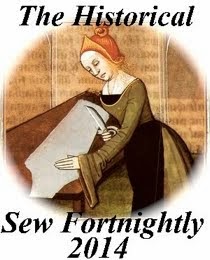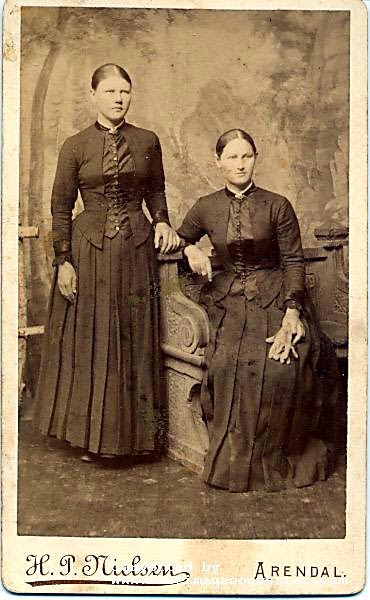 |
| "Miranda: The Tempest" by Waterhouse |
 |
| "Venetian Ladies Listen To The Seranade" by Frank C. Cowper |
 |
| ca. 1900 Aesthetic dress. |
The Pre-Raphaelite and Aesthetic garments were supposed to reveal the natural figure, un-restricted by corsets and un-distorted by hoops or bustles, but in perfect proportion, like the Venus de Milo’s figure. Unfortunately, many women didn’t have Venus de Milo’s figure, and they found these unstructured styles unflattering without some kind of figure support, so they began to add light boning and/or separate tight-fitting linings to some of their dresses. The overall shape of the figure, however, was no longer wasp-waisted, but slender with gentle curves: much easier to wear for the ordinary woman, even with a “health corset” on underneath.
There are many modern sewing patterns on the market that will help produce a great Pre-Raphaelite costume. Almost all of the “historic” costumes that are made by Simplicity and McCall’s, intended to represent the Ancient Greek, Medieval (here, also) or Italian Renaissance eras, while not historically accurate for the costume of those eras, would make perfect Pre-Raphaelite dress. In addition, any pattern for a Lord of the Rings Elf or Human costume, or an Arthurian Queen Guinevere, would make a good Medieval-style Pre-Raphaelite costume, as well as patterns from Ever After or The Princess Bride. Christmas Nativity scene costume patterns provide good tunic shapes for men and women, or you can even make a toga from a bed sheet. You're just going for the general "look" of the Pre-Raphaelites, so have fun coming up with ideas!
Copyright 2011, Elizabeth Urbach.
Sources:
“The Aesthetic Dress Movement: Fashion History of Aesthetics” by Pauline Weston Thomas for Fashion-Era.com
“Morgan Le Fay” Arthurian costume
The Pre-Raphaelite Online Resource
“Pre-Raphaelite Ideals and Artistic Dress” by Consuelo Marie Rockliff-Stein
“Artistic Flair – Aesthetic Dress of the 1880s”
“Aesthetic Dress” Clothing and Fashion Encyclopedia
Reforming Women’s Fashion, 1850 – 1920: Politics, Health, and Art by Patricia A. Cunningham.
"Misc. Female Elves" costume page





















No comments:
Post a Comment